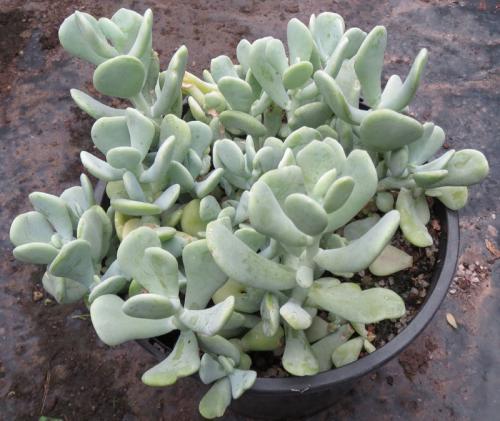ALLANTOIDES Rose 1909 incl. ALLANTOIDES 'Goldii' (engl./ fr.)
Distribution : Mexico (Oaxaca, Puebla)), 2100 – 2400 m.
Description by Reid Moran in CSJ, US, Vol. 38, Nr. 3, 1966
Stems 10 – 30 cm tall, to 1½ cm thick at the base.
Leaves clavate to oblong-obovate or rarely triangular-obovate, 1 – 2½ (in ‘Goldii’ to 3½) times as wide as thick, rounded to subtruncate (in ‘Goldii’ sometimes slightly emarginate) at the apex, narrowed just above the base and often slightly enlarged at the base, 2 – 5 cm long, 6 – 22 (in ‘Goldii’ to 26) mm wide above, 4 – 8 mm wide at the base, 5 – 15 mm thick, rounded dorsally, rounded to flat ventrally, in age sometimes minutely and irregularly purple-dotted, the margins broadly (in ‘Goldii’ narrowly) rounded.
Inflorescence : Upper bracts of the main axis rhombic-ovate, acute, 4 – 8 mm long, 2 – 4 mm wide, ½ - 1 mm thick, with acute margins.
Flowers 14 – 19 mm wide, petals elliptic-lanceolate, to obovate, 6 – 9 mm long, 2 – 4 mm wide, commonly with an irregular transverse red band 1 – 2½ mm wide and 0 – 1½ mm from the apex.
Cytology : n = 29, 58
Note :
1. S. allantoides 'Goldii' has first been described as Graptopetalum goldii by Matuda in 1956.
2. Inflorescences and flowers of S. allantoides and the form ‘Goldii’ are identical, but evidently there are clones which have pure white flowers without any red dots or splashes on the inside of the petals.
3. Inflorescences and flowers are also identical with those of S. alexanderi.
4. In Las Crasuláceas de Mexico, vol. II, p. 16, 2019, Jorge Meyrán Garcia published the form ‘Goldii’ of Sedum allantoides as an independent species > Sedum goldii - without giving any explanation. While inflorescence and flowers of the form ‘Goldii’ and of S. allantoides are identical, the shape of the leaves is different. This however - as a matter of course - in no way justifies the classification as a separate species.
------------------------------------------------------------------------------------------------
Distribution : Mexico (Oaxaca), 2100 – 2400 m.
Description par Reid Moran dans CSJ, US, Vol. 38, n° 3, 1966
Tiges 10 – 30 cm de haut, jusqu'à 1,5 cm d'épaisseur à la base.
Feuille en forme de massue, oblongue-obovale, ou rarement triangulaire-obovale, 1 – 2,5 (ou 3,5 chez ‘Goldii’) fois plus large qu'épaisse, arrondie ou presque tronquée à l'apex (parfois légèrement émarginée chez ‘Goldii’), étroite juste au-dessus de la base et souvent légèrement élargie à la base, 2 – 5 cm de long, 6 – 22 (jusqu'à 26 chez ‘Goldii’) mm de large en haut, 4 – 8 mm de large à la base, 5 – 15 mm d'épaisseur, arrondie au dos, arrondie ou plate sur le dessus, parfois parsemée de petits points pourpres avec l'âge, marges largement arrondies (étroitement chez ‘Goldii’).
Inflorescence : Bractées supérieures de l'axe principal losangées-ovales, pointues, 4 – 8 mm de long, 2 – 4 mm de large, 0,5 - 1 mm d'épaisseur, avec marge aiguë.
Fleurs 14 – 19 mm d'envergure, pétales elliptiques-lancéolées à obovales, 6 – 9 mm de long, 2 – 4 mm de large, habituellement avec une bande rouge transversale irrégulière, 1 – 2,5 mm de large et 0 – 1,5 mm à l'apex.
Cytologie : n = 29, 58
Note :
S. allantoides 'Goldii' fut d'abord décrit comme Graptopetalum goldii par Matuda, en 1956.
Inflorescences et fleurs de S. allantoides sont identiques à celles de la forme ‘Goldii’ ; mais il y a, bien évidemment, des clones aux fleurs d'un blanc pur, sans la moindre tache ou traînée de rouge à l'intérieur des pétales.
Inflorescences et fleurs sont aussi identiques à celles de S. alexanderi.
S. allantoides
Plants in habitat in Oaxaca, Mexico :
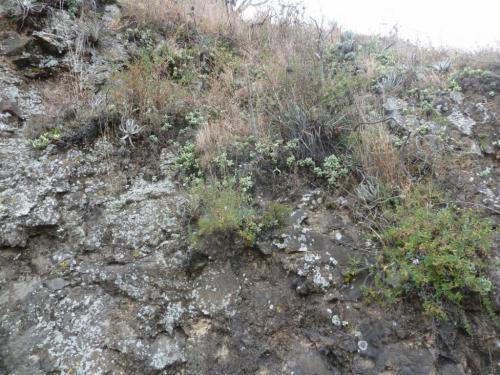
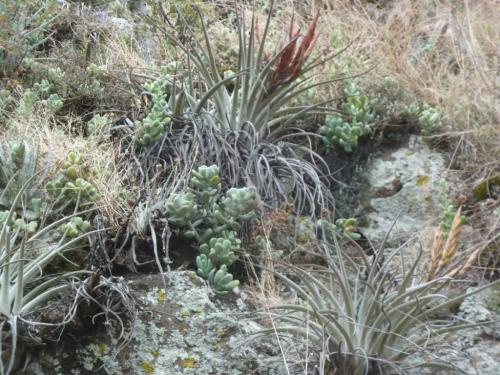
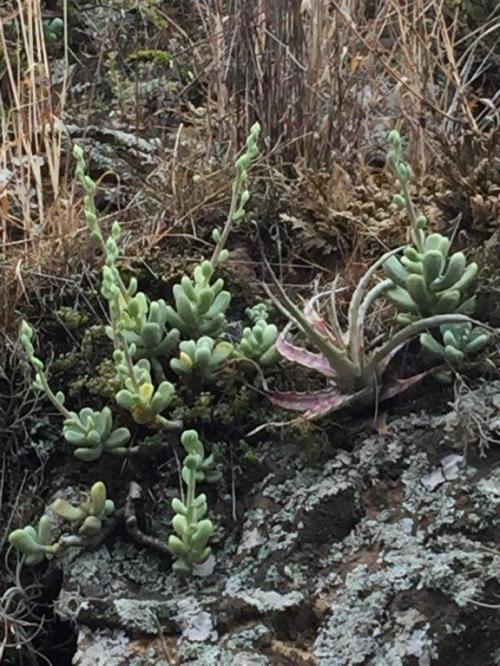
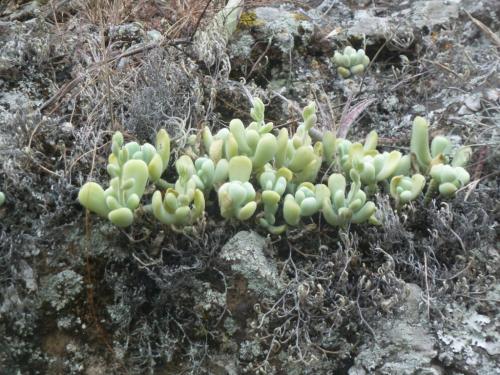
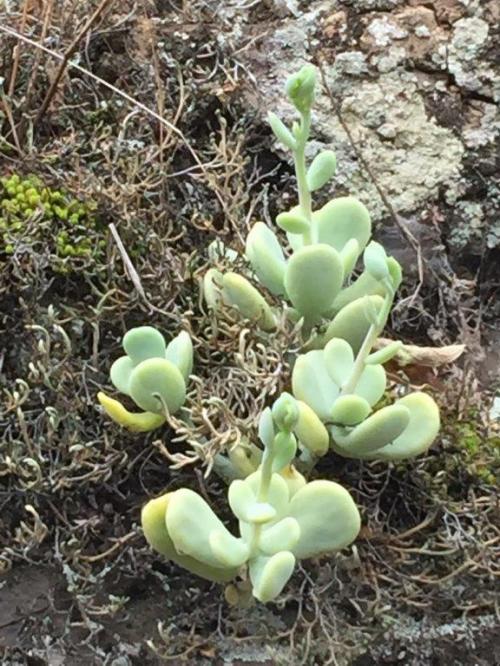
Photos Gerhard Köhres
Plants in cultivation :
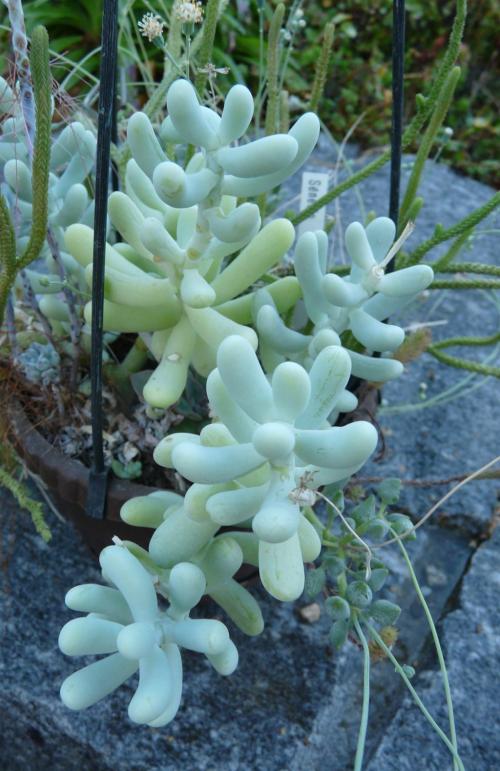
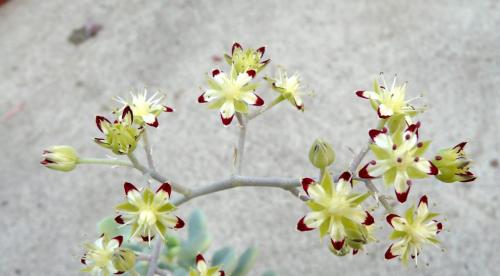
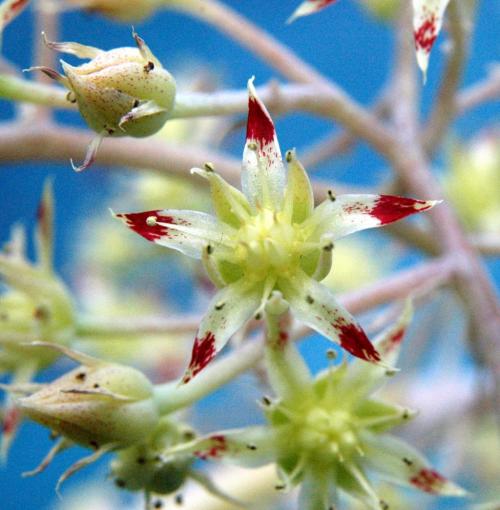
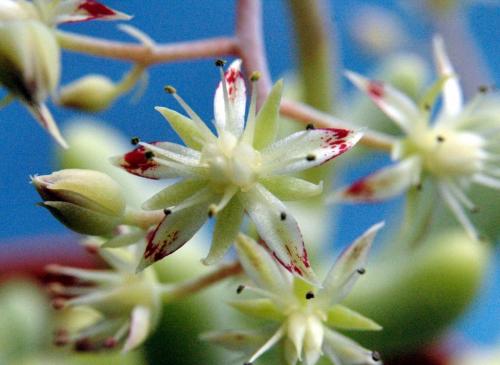
Photos Ray Stephenson
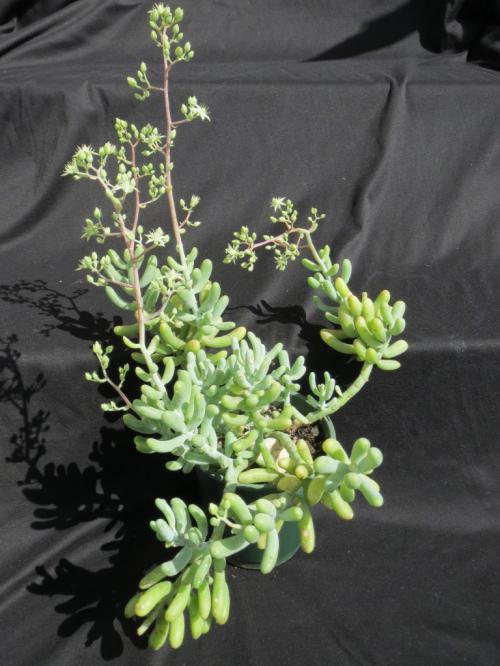
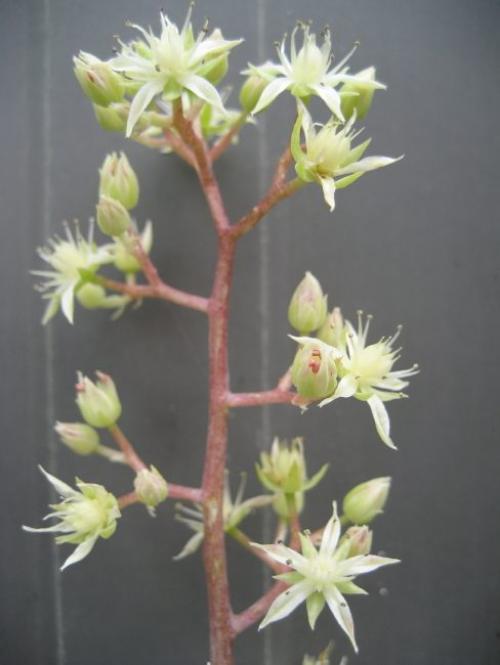
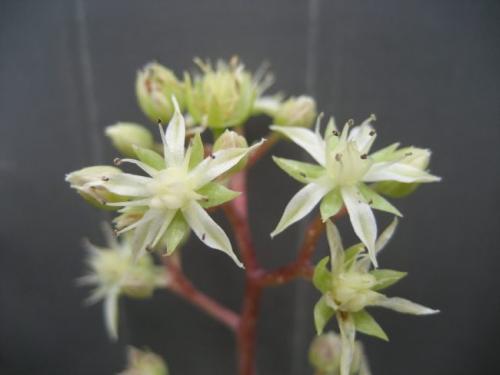
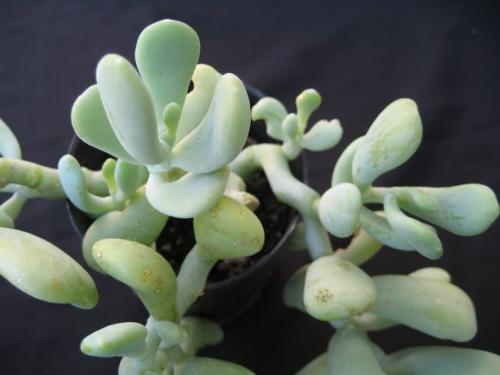
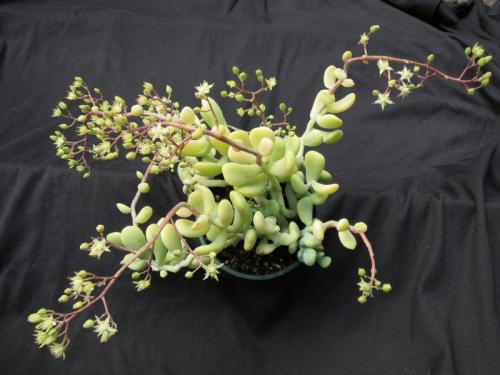
Photos Noelene Tomlinson
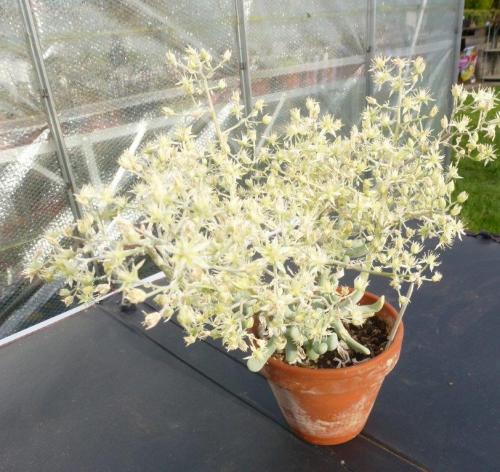
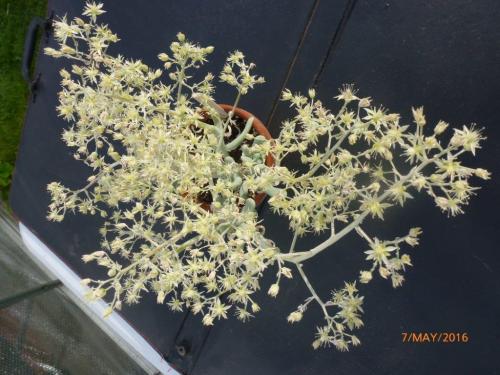
Photos Philip Greswell
S. allantoides 'Goldii' :
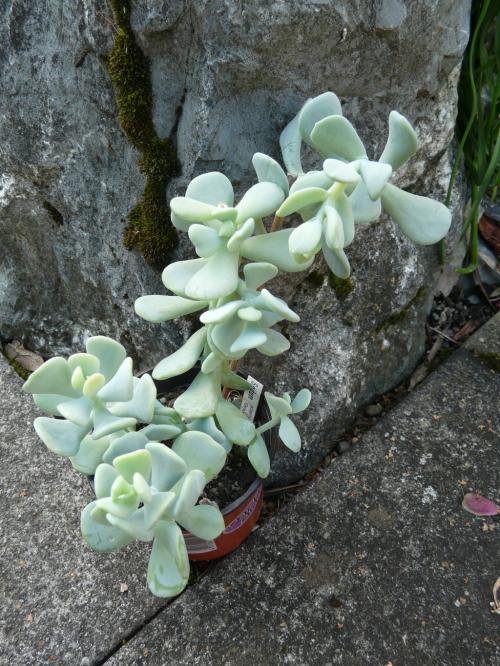
Photo Margrit Bischofberger
